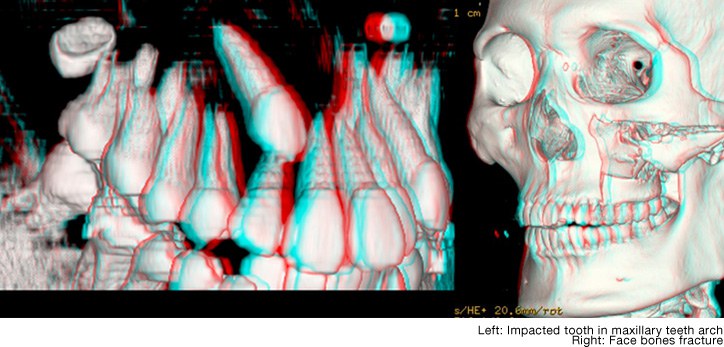Simple 3D glasses show a positive effect on dental education
Shumei MURAKAMI, Associate Professor, Graduate School of Dentistry
Researchers show that 3D glasses are effective at teaching the spatial intricacies of the mouth to dental students

Simple 3D glasses show a positive effect on dental education
Researchers show that 3D glasses are effective at teaching the spatial intricacies of the mouth to dental students
Of all clinical practices, dentistry is unusual in the time a doctor spends with the patient. Almost all appointments involve a detailed look inside the mouth, which is why good understanding of the spatial structure of the mouth is essential for good patient care. Researchers at Osaka University and University of Copenhagen, Denmark, have collaborated to find a cheap tool that effectively provides this education to dentistry students, preparing them for a promising practice immediately upon graduation.
"Study of the oral and maxillofacial region (OMR) is fundamental to all dentistry programs," says Dr. Shumei Murakami of Osaka University and leader of the study.
Dentistry students learn about the 3D structure of the OMR through hands-on practicals with patients and in the classroom by analyzing 3D images provided by CT and MRI scanning. However, these images have limitations.
"Sometimes stereoscopic information is hard to gather from 3D images, like when two structures are superimposed," said Professor Sven Kreiborg, an invited professor from Copenhagen University who, like Murakami, is interested in improving dentistry education.
Three-dimensional printings are one option, but cost makes it impractical, especially in poorer nations.
Murakami, Kreiborg and colleagues came up with a simple and somewhat archaic solution to the problem. 3D glasses – not the modern high-tech type, but rather those that were used in movie theatres half a century ago – recapitulate well the depth of the OMR.
"3D glasses have already proven effective in the classroom for other subjects that depend on spatial awareness like architecture," said Murakami.
While 3D glasses may seem crude compared with the images acquired from expensive CT and MRI machines, Murakami remarked that students are usually looking at printed 2D images in the classroom.
In their method, Murakami explains, "We use CT and MRI to make anaglyph images. The 3D glasses recapture the stereoscopic information lost when printing the CT and MRI images."
The study showed that students gathered more stereoscopic information when using the 3D glasses.
"Our goal was not to create revolutionary technology, but to find a cheap way that would have an impact on student education," said Murakami.
Indeed, as a pair of 3D glasses only costs 50 yen (U.S. 50¢), there is little reason for students and universities not to experiment with this approach.

Associate Professor Shumei Murakami Graduate School of Dentistry
shumei@dent.osaka-u.ac.jp
Reference:
Murakami S, Verdonschot RG, Kreiborg S, Kakimoto N, Kawaguchi A. ”Stereoscopy in dental education: An investigation”, Journal of Dental Education 81 (3), 2017
This research project was supported by the Osaka University International Joint Research Promotion Program, which aims to further enhance research quality and promote globalization at Osaka University through advanced research with overseas collaborators. Associate Professor Murakami jointly conducted this research with the following researcher: Professor Sven Kreiborg, Dr. Per Larsen and Dr. Tron Darvann at University of Copenhagen.
Interview held in March 2017
